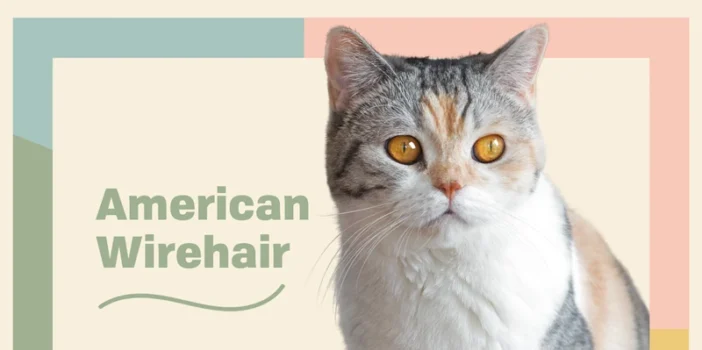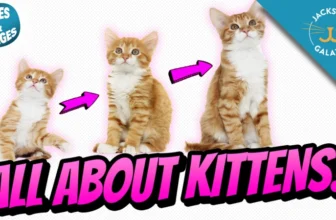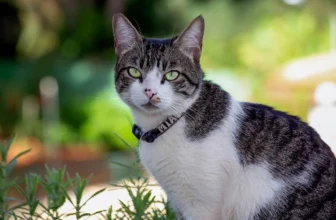When it comes to breeding American Wirehair cats, selecting the right pair is crucial to ensure the health and quality of the litter. As a breeder, you want to produce kittens that meet the breed standard, exhibit desirable traits, and are free from genetic disorders. But with so many factors to consider, it can be difficult to know where to start. In this article, we’ll dive into the key characteristics to look for in potential breeding cats, how to evaluate their suitability as a pair, and how to facilitate a successful breeding. Let’s explore the world of American Wirehair breeding together.
Understanding the Breed Standards
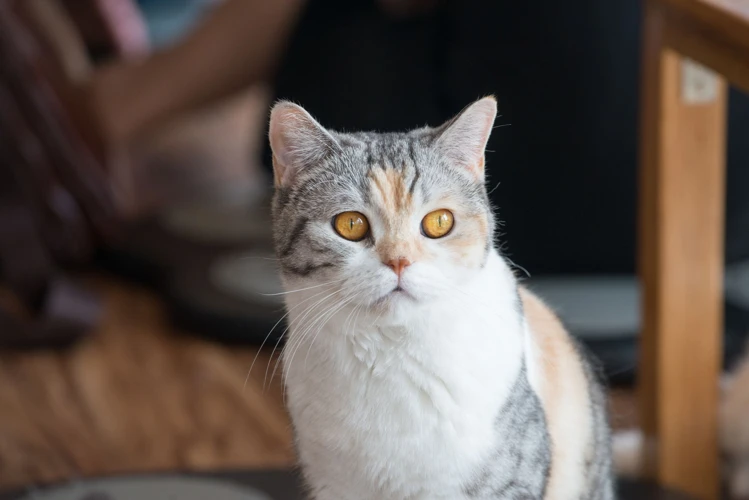
Understanding the breed standards is crucial when it comes to selecting the best breeding pair of American Wirehair cats. These standards outline the physical characteristics and temperament that a purebred American Wirehair should possess. It’s important to have a clear understanding of these standards in order to choose cats that meet them, resulting in healthy and desirable offspring. In the following sections, we will explore the breed standards of American Wirehairs in detail, along with tips for evaluating potential breeding cats.
Physical Characteristics
When selecting the best breeding pair of American Wirehair cats, it is essential to understand their breed standards. Physical characteristics play a vital role in deciding the right match. The American Wirehair breed has unique physical features that distinguish it from other breeds. Some of these characteristics include:
- Coat: The American Wirehair’s coat is dense, crimped, and springy. The crimped feature is essential, and breeders must ensure that they do not choose cats with wire-coated hair.
- Color: The breed’s coat comes in diverse colors and patterns. There is no preference for color or pattern among breeders.
- Body Type: The American Wirehair breed is a medium to large-sized, robust, and muscular cat. It has an overall balance and gives an impression of strength, power, and alertness.
- Eye Shape and Color: The breed has large round eyes that are set wide apart. Eye color varies between gold, copper, and green, with no preference for any specific color in breeding standards.
- Ears: The breed’s ears are medium-sized, wide at the base, and rounded at the tips.
- Facial Features: The breed has a round and broad head with full cheeks and a firm chin.
It is important to note that these characteristics should be consistent with the breed standards to ensure that the cat is a purebred American Wirehair. It is also crucial to evaluate the potential breeding pair’s physical characteristics to ensure that they complement each other and improve the breed. Understanding the physical characteristics of the American Wirehair and choosing cats with desirable qualities can lead to a successful breeding program.
For further insights about American Wirehair breeding success, potential diseases in breeding and responsible breeding tips, check out these links:
american-wirehair-breeding-diseases, americn-wirehair-breeding-success, responsible-breeding-american-wirehairs and american-wirehair-coat-colors. If you are a beginner breeder or just looking for general wirehair breeder tips, we recommend checking out wirehair-breeder-tips. For more information about American Wirehair cat pregnancy stages visit american-wirehair-cat-pregnancy-stages.
Temperament
When selecting the best breeding pair of American Wirehair cats, it’s crucial to evaluate their temperament along with their physical characteristics. A cat’s temperament can greatly affect the personality and behavior of their offspring.
Here are some important factors to consider when evaluating the temperament of potential breeding cats:
- Socialization: American Wirehairs should be friendly and people-oriented. They should be comfortable around other cats and animals. Kittens should be socialized from a young age to ensure they develop positive behaviors.
- Aggression: Aggression is not desirable in American Wirehairs. Breeders should prioritize cats with docile temperaments to ensure their offspring will have pleasant personalities.
- Activity level: American Wirehairs are known for their active and playful nature. However, it’s important to evaluate the activity levels of breeding cats to ensure they are not hyperactive or lethargic.
- Trainability: American Wirehairs are intelligent cats that can be trained. A good breeding cat should be responsive to commands and learn quickly.
It’s important to note that while breeders can strive for certain temperament qualities, there is always an element of unpredictability in breeding. Genetics play an important role in personality traits, so evaluating a cat’s genetics through genetic testing can also provide insight into potential temperament issues in offspring.
Evaluating Potential Breeding Cats
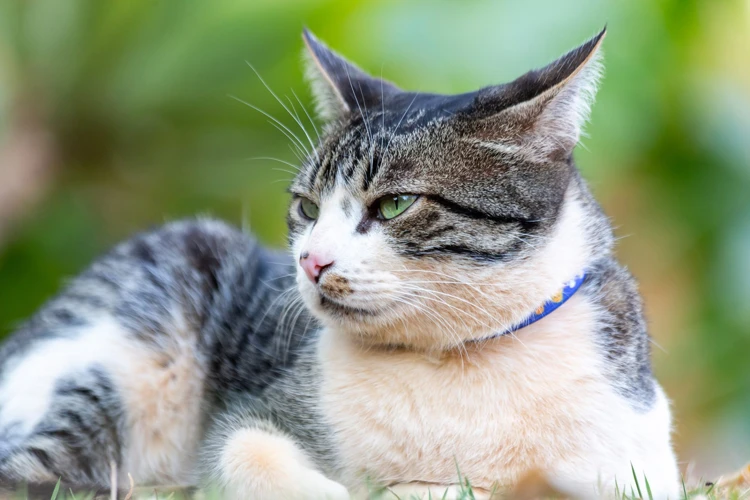
As you embark on the journey of breeding American Wirehair cats, it’s essential to thoroughly evaluate potential breeding cats to ensure their offspring meets the highest standards. This step requires careful consideration of various factors, including the cats’ health, genetic makeup, and previous litter history. By taking the time to evaluate each cat’s suitability for breeding, you can increase your chances of producing healthy and high-quality kittens. So, let’s explore what you should look for when evaluating potential breeding cats.
Health Checks
When evaluating potential breeding cats, it’s important to conduct thorough health checks to ensure the cats are healthy and don’t have any conditions that could be passed on to their offspring. Here are some key areas to focus on during health checks:
- Physical examination: Look for any signs of illness, injury, or deformities. Check their eyes, ears, teeth, mouth, skin, fur, and overall body condition.
- Test for contagious diseases: Cats can carry infectious diseases such as feline leukemia virus (FeLV), feline immunodeficiency virus (FIV), and others. Testing for these diseases is important to prevent the spread to other cats and to protect the health of the kittens.
- Check for genetic disorders: Some genetic disorders can be passed down to offspring if both parents carry the gene. Testing for genetic disorders such as hypertrophic cardiomyopathy (HCM) and polycystic kidney disease (PKD) is recommended.
- Vaccinations: Ensure the cats are up-to-date on their vaccinations to prevent the spread of infectious diseases.
- Deworming: Deworming is important to prevent parasites from being passed down to offspring and can also improve the overall health of the cats.
- Nutrition: A balanced diet is essential for overall health and fertility of the cats.
By thoroughly checking the health of potential breeding cats, you can minimize the risk of genetic disorders and ensure the health of the future kittens.
Genetic Testing
When selecting the best breeding pair of American Wirehair, genetic testing is a crucial step. This testing will help to determine if any genetic disorders or diseases are present in the potential breeding cats. Here are some genetic tests that should be considered:
- Hypertrophic Cardiomyopathy (HCM) – This is a common heart disease that affects many cat breeds, including American Wirehairs. HCM testing should be performed on both cats to ensure that they do not carry this genetic mutation.
- Polycystic Kidney Disease (PKD) – PKD is a genetic disorder that causes the formation of cysts on the kidneys, which can lead to kidney failure. Testing should be performed on both cats to ensure that they do not carry the PKD gene.
- Progressive Retinal Atrophy (PRA-CEP290) – PRA is a degenerative eye disease that can lead to blindness. PRA-CEP290 is the specific gene mutation that causes this disease in American Wirehairs. Testing should be performed on both cats to ensure that they do not carry this mutation.
- Blood Type – Like humans, cats have different blood types. It is important to know the blood types of both cats to prevent any potential issues during pregnancy or birth.
- Cat Coat Color and Pattern – There are certain coat colors and patterns that are not acceptable in American Wirehairs according to breed standards. Genetic testing can help identify the potential for offspring to carry these undesirable traits.
By conducting genetic testing, breeders can ensure that the offspring of the potential breeding pair are healthy and free from genetic disorders that may impact their quality of life.
Previous Litter History
When considering a cat as a potential breeding partner, it’s important to review their previous litter history. This information can provide valuable insight into the cat’s ability to reproduce and the health of their offspring. Reproductive history should not be the sole determining factor in selecting a breeding pair, but it is an important aspect to consider.
To assess a cat’s previous litter history, ask the breeder or previous owner for the following information:
| Information to Obtain | Significance |
|---|---|
| Number of litters | A cat that has successfully reproduced multiple times may demonstrate greater fertility and reproductive health. |
| Number of kittens per litter | The average number of kittens per litter can indicate the cat’s breeding capacity. |
| Incidence of stillborn kittens | An unusually high number of stillborn kittens may indicate underlying health issues in the cat or inbreeding. |
| Incidence of kitten mortality | The number of kittens that died after birth can indicate the health of the kittens and the mother cat. |
| Age at first litter | An older age at the first litter may indicate fertility issues or underlying health problems. |
| Intervals between litters | A shorter interval between litters may indicate good reproductive health, but there should be a sufficient gap between litters to allow the mother cat’s health to recover. |
It’s important to note that one or two negative occurrences in a cat’s previous litter history should not necessarily rule them out as a potential breeding partner. However, if there is a pattern of health issues or low fertility, it may be best to look for other options.
Selecting the Best Pair
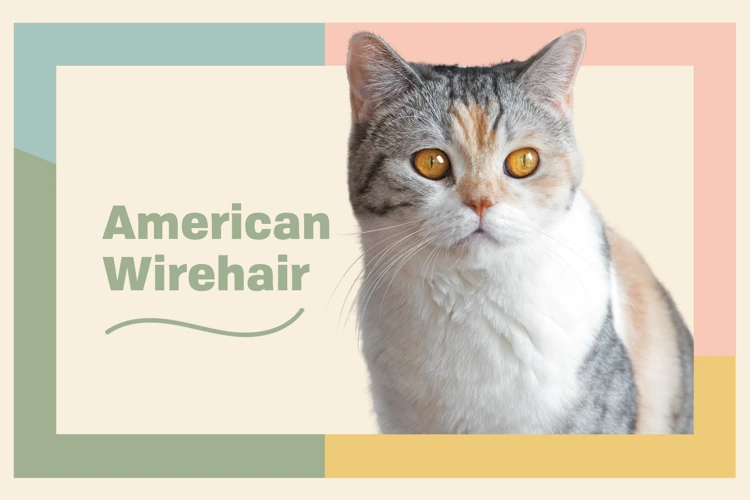
As a breeder, selecting the right pair of cats is crucial to ensure healthy, strong kittens that adhere to the breed standard. The process of choosing a breeding pair involves careful evaluation of various factors, including health, temperament, and physical characteristics. With these criteria in mind, breeders can make informed decisions and select a pair that is likely to produce exceptional offspring. Let’s take a closer look at the key considerations when it comes to selecting the best breeding pair of American Wirehair cats.
Consistency with Breed Standards
When selecting a breeding pair of American Wirehair, it’s crucial to ensure that they both meet the breed standards to produce high-quality kittens. The breed standards are established by cat associations like the Cat Fanciers Association (CFA) and describe the ideal characteristics that a breed should possess. Here are some factors to consider for consistency with breed standards:
| Physical Characteristics | Temperament |
| Both cats should have the signature wiry, dense coat that is unique to the American Wirehair breed. Their ears should be medium-sized and rounded at the tips. The eyes should have a distinctive shape and be large and round. The body should be muscular and compact, with a broad chest and a short tail. | The ideal American Wirehair temperament is affectionate, playful, and curious. Both cats should exhibit these qualities to ensure that their kittens will inherit them. |
| Any physical abnormalities, such as deformities or asymmetry, should be avoided. The coat should not be too long or too short, and soft or silky fur is not desirable. | Aggression, shyness, and excessive fear are all undesirable temperament traits in American Wirehairs. These traits may indicate possible temperament problems that could be passed down to the kittens. |
A breeding pair that is consistent with breed standards will produce kittens that are desirable to potential owners and judges at cat shows. To ensure that the cats meet the breed standards, it’s recommended that a breeder seeks the advice of an experienced American Wirehair breeder or a veterinarian with experience in feline genetics and breeding.
Complementary Qualities
As a breeder, you should aim to produce offspring that exhibit the best qualities of both parents. This means that both cats should complement each other in terms of physical and behavioral traits. Let’s break down some of these complementary qualities:
Physical Qualities:
- Size and body type: Look for cats that are similar in size and body type to ensure that their offspring will inherit this trait.
- Coat: Pay attention to the texture, color, and length of the coat. You want to pair cats whose coats will complement each other.
- Facial features: The face is an essential aspect of any cat’s appearance. Consider how the cats’ facial features will influence their offspring’s appearance.
- Health: A healthy breeding pair will produce healthy offspring. Look for cats with excellent physical health and no history of hereditary health issues.
Behavioral Qualities:
- Temperament: It is crucial to select cats with compatible personalities to create a healthy and happy litter. Consider each cat’s character and how they react in various situations.
- Socialization: A well-socialized breeding pair will have calmer and more confident kittens. Ensure that both cats get along well with other cats and people.
- Intelligence: Select cats that exhibit intelligence and high levels of adaptability. This trait can make training and socialization easier for their offspring.
- Energy level: Consider each cat’s energy levels and how that plays out in their behavior. You want to pair cats whose energy levels are compatible.
Keep in mind that no cat is perfect, and it may be challenging to find the perfect combination of complementary qualities. However, by considering physical and behavioral traits when selecting the breeding pair, you can produce healthy, happy, and high-quality offspring that meet breed standards.
Considerations for Inbreeding and Outbreeding
When selecting the best breeding pair of American Wirehair, it is important to consider the pros and cons of inbreeding and outbreeding. Inbreeding, which is the mating of closely related cats, can increase the likelihood of genetic defects and health problems in offspring. On the other hand, outbreeding, or mating with unrelated cats, can introduce new genetic traits and increase genetic diversity, but also poses risks, such as a higher chance of the offspring inheriting recessive genetic disorders. It is important to carefully consider the best approach for your breeding program.
One potential method of tracking relatedness is to use a Coefficient of Inbreeding (COI) calculator. The COI calculates the probability that any two genes carried by an individual cat are identical by descent, meaning they are inherited from a common ancestor. Lower COI values suggest greater genetic diversity, although this approach may be limiting in the Wirehair breed, as it is a relatively new breed with only a small pool of available cats to work with.
Inbreeding Pros:
| Pros | Description |
| Increased uniformity | Inbreeding can result in offspring with greater physical consistency and predictability. |
| Concentration of desirable traits | By mating closely related cats with desirable traits, those traits may become more concentrated in offspring. |
Inbreeding Cons:
| Cons | Description |
| Increased risk of genetic defects | Inbreeding can increase the chances of genetic defects and health problems in offspring. |
| Decreased genetic diversity | Inbreeding can reduce genetic diversity which can decrease overall health and fitness of the breed. |
Outbreeding Pros:
| Pros | Description |
| Increased genetic diversity | Outbreeding can increase genetic diversity which can enhance breed health and longevity. |
| Introduction of desirable traits | Mating with unrelated cats can introduce new favorable traits into a breeding population. |
Outbreeding Cons:
| Cons | Description |
| Risk of genetic incompatibility | Outbreeding can increase the risk of genetic incompatibility and produce offspring with undesirable traits. |
| Reduced uniformity | Outbreeding may result in offspring that are less uniform in physical characteristics and temperament. |
Ultimately, the decision of whether to inbreed or outbreed should be determined by the goals and priorities of your breeding program. Incorporating a healthy mix of both methods, as well as regularly screening for genetic defects, can help ensure a strong and thriving American Wirehair breed.
Facilitating Successful Breeding
Breeding cats can be a complex process requiring careful attention to detail and thorough planning. Success in breeding relies on a variety of factors, from the health of the cats involved to the timing of mating. Facilitating a successful breeding involves a combination of pre-breeding health care, monitoring during pregnancy, and troubleshooting any issues that arise along the way. Let’s delve into some of the key considerations for facilitating successful breeding below.
Pre- and Post-Breeding Health Care
Before breeding your American Wirehair cats, it is important to ensure that both parents are in optimal health. Proper pre-breeding health care can help prevent potential complications during pregnancy and birth. Post-breeding health care is also crucial to ensure the health and well-being of the mother and kittens. Here are some key aspects of pre- and post-breeding health care for your American Wirehair cats:
| Pre-Breeding | Post-Breeding |
|---|---|
| Physical examination – Prior to breeding, both the male and female should undergo a thorough physical examination. This exam may include blood work, urinalysis, fecal examination, and other diagnostic tests to ensure that both cats are healthy and free of any underlying medical conditions. | Monitoring for pregnancy – After breeding, the female should be monitored for signs of pregnancy. This may include regular veterinary check-ups, ultrasounds, and other diagnostic tests to ensure the health and wellbeing of the mother and kittens. |
| Vaccinations – Ensure both cats are up to date on their vaccinations before breeding, as this can help prevent the spread of diseases and infections. | Nutrition and diet – It is crucial to provide the mother with a balanced and nutritious diet during pregnancy and after birth to support the health of the mother and kittens. Your veterinarian may recommend a specific diet or supplements for the mother. |
| Parasite control – Both cats should be free of parasites before breeding. Your veterinarian may recommend deworming and flea/tick prevention measures. | Post-birth check-up – The mother and kittens should receive a full veterinary check-up within the first few days after birth to ensure they are healthy and thriving. The mother may also require additional care or medications, such as pain relief or antibiotics, depending on the type of delivery and any potential complications. |
By following these guidelines, you can help ensure that your American Wirehair cats are in optimal health before and after breeding, which can increase the chances of a successful and healthy litter.
Monitoring and Troubleshooting Pregnancy
After successfully breeding the selected pair of American Wirehairs, it’s important to monitor and troubleshoot the pregnancy to ensure the health and safety of the mother cat and her kittens. Below is a table outlining some important considerations during this crucial time.
| Consideration | Description |
|---|---|
| Nutrition | Providing a balanced and nutritious diet for the pregnant cat is essential for the health of the mother and her developing kittens. Consult with a veterinarian for specific dietary recommendations. |
| Weight Gain | A pregnant cat should gain weight gradually throughout her pregnancy. Rapid weight gain could indicate a problem with the pregnancy and should be monitored closely. |
| Behavior Changes | Pay attention to any changes in the mother cat’s behavior. She may become more affectionate or restless as she nears the end of her pregnancy. |
| Abnormal Discharge | Any abnormal vaginal discharge should be monitored closely, as it could indicate a problem with the pregnancy. |
| Ultrasound | An ultrasound can provide valuable information about the number of kittens and their development. It can also help detect any potential problems. |
| Emergency Plan | Have a plan in place for emergencies, such as premature labor or complications during delivery. Consult with a veterinarian for guidance on what to do in these situations. |
It’s important to remember that every pregnancy is unique, and there may be unexpected complications. If you notice any concerning symptoms or behaviors, it’s best to consult with a veterinarian as soon as possible. By monitoring and troubleshooting pregnancy carefully, breeders can help ensure a healthy outcome for both mother and kittens.
Conclusion
After thoroughly understanding the breed standards, evaluating potential breeding cats, and selecting the best pair, it is important to facilitate successful breeding. Pre- and post-breeding health care is crucial to ensure a safe and healthy pregnancy for the female cat. Monitoring and troubleshooting throughout the pregnancy is also important to ensure the health and well-being of the mother and litter.
Inbreeding and outbreeding should also be carefully considered when selecting the best breeding pair. Inbreeding can increase the risk of genetic defects, while outbreeding may bring in new desirable traits. It’s important to strike a balance between preserving the breed’s characteristics and introducing new traits.
By following these guidelines, breeders can increase the chances of producing healthy and desirable American Wirehair cats. As a responsible and ethical breeder, it’s important to prioritize the well-being of the cats, and strive to improve the breed while adhering to breed standards. Ultimately, a successful breeding program will not only produce quality cats but also contribute to the overall health and sustainability of the breed.
Frequently Asked Questions
1. How can I tell if my American Wirehair cat meets the breed standards?
You can consult with breed organizations or attend cat shows to learn about breed standards and observe top-performing cats.
2. What health checks are crucial before breeding my American Wirehair?
Generally, you should perform health checks for infectious diseases, heart and lung function, and reproductive health.
3. Is genetic testing necessary before breeding American Wirehairs?
Yes, genetic testing can identify potential health issues and help breeders make informed breeding decisions.
4. What should I look for in the previous litter history of a potential breeding cat?
You should assess the quality and health of the kittens produced, as well as any potential genetic or medical issues.
5. Can American Wirehairs be bred with other cat breeds?
Yes, but it is important to consider the genetic compatibility and potential health risks of outbreeding.
6. Why is consistency with breed standards important when selecting breeding pairs?
Consistency with breed standards ensures that offspring have the physical and temperamental characteristics associated with the American Wirehair breed.
7. What complementary qualities should I look for in a potential breeding pair?
Look for cats that complement each other’s strengths and weaknesses in physical and behavioral attributes.
8. What are the risks of inbreeding in American Wirehair breeding?
Inbreeding can increase the risk of genetic disorders and compromise the overall health of the breed.
9. Why is pre- and post-breeding health care crucial for American Wirehair cats?
Maintaining a healthy physical and emotional state can improve the chances of a successful breeding and healthy litter.
10. How can I prevent and troubleshoot potential problems during pregnancy in American Wirehair cats?
Maintaining regular veterinary check-ups and monitoring the cat’s behavior and weight can help identify and address potential issues during pregnancy.

